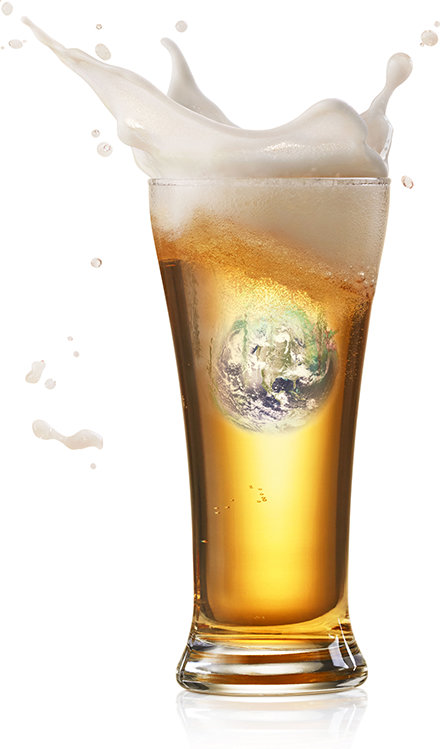A Planet Drowning in Alcohol

We might not think of alcohol when we think of the world’s most addictive or harmful drug, but alcohol is up there, completely dwarfing narcotic drugs and mind-altering substances. Alcohol is a drug, in every sense of the word, and just because it is legal in the United States and other countries does not mean it is harmless.
I titled this piece “A Planet Drowning in Alcohol” because of a study I saw in the medical journal The Lancet. According to published research, global levels of alcohol consumption are rising with consistency and predictability. If we don’t make changes in our drinking habits as a species, we are going to end up a race of addicts—belligerent drinkers stumbling through a disintegrating society.
Dire Warnings from Toronto Researchers
The combined research efforts of the Centre for Addiction and Mental Health and the World Health Organization brought us an extensive research document that was published in the May 2019 issue of The Lancet. The report revealed concerning increases in alcohol consumption trends from 1990 to 2017, as well as projections for consumption levels up to 2030.
According to the research, alcohol is a leading risk factor for overall global disease rates. According to the research, global adult per capita consumption of alcohol increased from 5.9 liters of alcohol per year to 6.5 liters of alcohol per year over 27 years. As for future projections, alcohol consumption per capita is expected to increase to 7.6 liters per year by 2030.
The research also examined global abstinence statistics. These are people who do not drink alcohol with any regularity. In 1990, 46 percent of the world’s population did not drink alcohol. By 2017, only 43 percent of the world’s population did not consume alcohol. Not a significant change, but a change nonetheless. Abstinence is expected to decrease to 40 percent by 2030.
The research concluded with a concerning forecast. I quote from The Lancet, “Based on these data, global goals for reducing the harmful use of alcohol are unlikely to be achieved, and known effective and cost-effective policy measures should be implemented to reduce alcohol exposure.”
The World Health Organization and Global Alcohol Consumption Statistics

After reading the paper in The Lancet, I decided to research further, to see what other organizations had published on global alcohol consumption trends. I studied the research of the World Health Organization (WHO) which has the most resources for gathering global projections of health risks and predicaments.
What I found was more concerning than what I had anticipated:
- According to the WHO, 3 million deaths worldwide are attributable to alcohol. That’s a little more than 5 percent of all deaths across the planet.
- Alcohol has been implicated as a causal or exacerbating factor in more than 200 known diseases.
- Alcohol “takes people out” when they are young. While the overall death rate from alcohol-related causes may be at 5 percent of all total deaths, for ages 20-39, the prevalence of alcohol in global death statistics is much higher. In this age group, 13.5 percent of all deaths every year are attributed to alcohol.
- And alcohol is not just a critical factor for our health. Alcohol causes all kinds of problems, societal, familial, economic, etc. Excessive drinking is very costly to a civilization. Its misuse ruins families, and a drunk society is a society which is retrogressing, not progressing.
A Big Problem in the United States Too
The information from the WHO was concerning. But I wanted to look closer to home, to see how the United States stood in the global alcohol issue. Though we are a first world country and arguably the most powerful nation in the world, we also have a big drinking problem. According to the National Institute on Alcohol Abuse and Alcoholism:
- The prevalence of binge drinking in the U.S. is quite high. In 2015, 26.9 percent of Americans ages 18 and older reported binge drinking at least once in the past month. That’s one-fourth of our nation’s adults misusing alcohol!
- The statistics for full-blown alcohol addiction in the United States are also quite concerning. According to the NIAAA research, about 15.1 million American adults, or 6.2 percent of adults, meet the criteria for chronic alcohol addiction.
- Alcohol-related deaths are a huge problem in the United States. According to the research, about 88,000 people die from alcohol-related deaths in the U.S. every year. That makes alcohol the third leading cause of preventable death, killing more people than all drugs combined.
- Last but not least, the economic burden alcohol is exerting on the American economy is quite severe. According to the NIAAA, alcohol misuse costs the United States about $250 billion every year.
How Can You Protect Your Family from Alcoholism?

Reversing the dwindling spiral of global alcohol consumption is something we have to fix from the bottom up. That means that the problem is not going to be solved in the White House, in lawmaking bodies or Supreme Court decisions, in lawsuits of alcohol companies or state legislature. All of those efforts could help, but the problem of excessive drinking is solved in our homes, as that’s where it is occurring.
We have to get our families educated on the harmful effects of excessive alcohol consumption. It is essential for people to understand the truth about this seemingly harmless, heavily promoted substance. Furthermore, we need to commit to a healthy, sober lifestyle. We need to stop glamorizing alcohol consumption and idolizing those who drink and party and who are “cool” because of it.
Our society is built in our homes. The family unit is what makes this country the unique, powerhouse nation that it is. Let’s commit to being sober parents, and let’s commit to raising sober kids.
Sources:
- https://www.thelancet.com/journals/lancet/article/PIIS0140-6736(18)32744-2/fulltext
- https://www.who.int/news-room/fact-sheets/detail/alcohol
- https://www.niaaa.nih.gov/alcohol-health/overview-alcohol-consumption/alcohol-facts-and-statistics
Reviewed and Edited by Claire Pinelli, ICAADC, CCS, LADC, RAS, MCAP


 ®
®